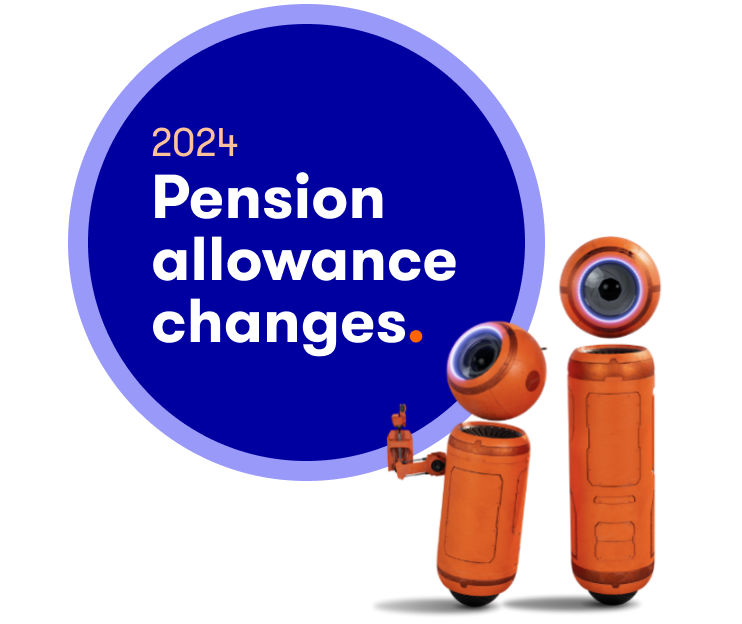ii SIPP
Pension commencement lump sum (PCLS) guide

Important information: A SIPP is for those wanting to make their own investment decisions when saving for retirement. As investment values can go down as well as up, the amount you retire with could be worth less than you invested. Usually, you won’t be able to withdraw your money until age 55 (57 from 2028). Before transferring your pension, check if you’ll be charged any exit fees and make sure you don't lose any valuable benefits such as guaranteed annuity rates, lower protected pension age or matching employer contributions. If you’re unsure about opening a SIPP or transferring your pension(s), please speak to an authorised financial adviser.
What is a pension commencement lump sum (PCLS)?
A pension commencement lump sum (PCLS) is an amount of money you can take out of your pension tax-free when you first start taking benefits. You might well have heard it described as your ‘tax-free cash’ or your ‘tax-free lump sum’.
For most people, it’s a relatively straightforward concept. However, it has become more complicated for wealthier pension investors. This is as a result of the removal of the lifetime allowance in April 2023 and the introduction of two new allowances, the Lump Sum Allowance (LSA) and the Lump Sum and Death Benefit Allowance (LSDBA).
- The LSA: This limits the maximum PCLS you can normally take from your pension and also includes the tax-free element of an Uncrystallised Funds Pension Lump Sum (UFPLS).
- The LSDBA: This includes the LSA limits plus any lump sums paid if you die before age 75 or Serious Ill Health Lump Sums.

The lifetime allowance before April 2024
The lifetime allowance was introduced in 2006 as a means of capping the amount individuals can hold in a pension and still benefit from tax advantages. Any pension savings in excess of this amount would be subject to a tax charge.
In the 2023 budget, the government confirmed that the LTA would be scrapped. Although the LTA charge ceased to apply in the 2023/24 tax year, the LTA wasn’t formally abolished until April 2024.
The standard LTA was £1,500,000 when it was introduced in 2006/7, increasing to its peak of £1,800,000 in 2010/11 and 2011/12. By 2016/17 it had dropped down to £1m. From 2018/19 increases were linked to inflation and, by the point at which the LTA was abolished, it stood at £1,073,100.

Who gets a pension commencement lump sum?
All private pensions allow you to take a tax-free lump sum – normally up to 25% of your pot.
This applies whether you have a defined contribution pension or a defined benefit pension. However, the PCLS calculation used is different, depending on the type of scheme you’re in.
How does PLCS work?
If you’re in a defined contribution scheme, PCLS payments are reasonably straightforward and you can normally take up to 25% of the pot you are crystallising tax free. This is likely to be when you:
- Go into flexi-access drawdown
- Buy an annuity
- Cash in an entire pension
The PCLS payment will be calculated as a simple 25% of the amount you are crystallising (although maximum limits may apply). So, if you are crystallising £100,000, you’ll get £25,000 paid as a PCLS and the remaining £75,000 to generate taxable retirement income.
If you’re in a defined benefit pension, for example a final salary or career-average revalued earnings (CARE) scheme, the PCLS calculation formula is a bit more complex. This is because you can’t accurately calculate the value of a defined benefit pension and make a straightforward 25% calculation.
Instead, defined benefit schemes, will use one of two different methods of PCLS calculation.
- Commutation: Most private defined benefit schemes let you take a PCLS in exchange for a reduction to your annual income. The ‘commutation factor’ will be set by the scheme and states how much income you’ll be required to give up to take tax-free cash. An example might be a £1 loss of income each year for a every £15 that is taken as tax-free cash.
- Separate lump sum: Some schemes (most notably in the public sector) offer a fixed level of tax-free cash which doesn’t reduce the level of income you get. Like your income benefits, this will be linked to your salary and the amount of time you have been a member of the scheme, for example 3/80ths of your salary, for every year you were in the scheme.
Any PCLS payment you take counts towards your LSA and your LSDBA. This means you need to have remaining allowance available to take your tax-free cash.
What is the maximum PCLS limit?
Now that the lifetime allowance has been abolished, a cap has been applied to the maximum amount of PCLS that is permitted and it currently stands at £268,275.
However, because historically the amount of PCLS that could be taken was higher than today, there are cases where you may be entitled to a larger PCLS. For example if you have lifetime allowance protection (which you might have been entitled to if your pot was worth more than the lifetime allowance before a reduction was implemented). In those cases you would be entitled to 25% of your protected lifetime allowance.
You might also be able to take a larger PCLS if you had a pension pre-2006 which let you take more than 25% of your pension tax free.
When can I take my PCLS?
This will depend again on whether you have a defined contribution or defined benefit scheme.
With a defined contribution pension you can take your PCLS at any point from age 55 (rising to 57 in 2028). However, it’s important to note that you can only take PCLS at the point at which you are crystallising benefits, for example when you are going into drawdown or buying an annuity. If you want to take cash out of your pension before you crystallise benefits, it would be considered an uncrystallised fund pension lump sum (UFPLS). Only 25% would be paid tax free, the rest would be taxed as income.
If you are in a defined benefit pension scheme, you can normally take your PCLS at the point you reach the scheme’s normal retirement age. However, scheme rules can vary so it’s important to check.
Do I have to take a PCLS?
As pension income is taxable, the ability to take a tax-free lump sum worth 25% of your pot is one of the main advantages of a pension.
However, you don’t have to take a PCLS. On some occasions people do choose not to take a tax-free cash to keep the money within a tax wrapper.
The only time where there wouldn’t be any reason to turn down your PCLS is if you’re in a defined benefit scheme that pays a separate lump sum that doesn’t reduce your future retirement income.
Can I delay taking my PCLS?
Depending on your scheme, you might be able to delay taking your PCLS, but not indefinitely. Once all or part of your pension has been crystallised, PCLS pension rules give you 12 months to take your tax-free cash. After that point, you lose your right to take your tax-free lump sum.
What's the difference between a PCLS and UFPLS?
A PCLS is a tax-free lump sum that is taken when you crystallise your pension (for example going into drawdown or buying an annuity).
A PCLS allows you to take 25% of your pension tax free. There is also the option to take a lump sum that combines both 25% tax free cash and taxable income of 75%. This is known as an UFPLS (Uncrystallised Funds Pension Lump Sum).
Another important difference to note is that if you make an UFPLS withdrawal and take taxable benefits from your pension, you will trigger the Money Purchase Annual Allowance. This will reduce the amount you can pay into your pension going forward down to £10,000.
However, if you take a PCLS and don’t take any income from your crystallised fund, you can keep your annual allowance of 100% of your earnings, up to a maximum of £60,000. This will be an important consideration if you want a lump sum from your pension but want to carry on contributing to it.
This legislation is intended to reduce abuse of PCLS recycling rules, where savers take tax-free cash out of their pension and reinvest the money back into the pot for additional tax relief.
PCLS frequently asked questions
How can Pension Wise help?
If you have a defined contribution pension scheme and are 50 or over, then you can access free, impartial guidance on your pension options by booking a face to face or telephone appointment with Pension Wise, a service from MoneyHelper.
If you are under 50, you can still access free, impartial help and information about your pensions from MoneyHelper.

Learn more about our SIPP
Learn how to make the most of your SIPP with our useful guides.